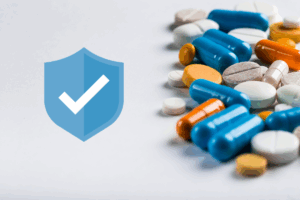Prescription drug rebates can help plans find relief from their pharmacy benefit spend. But depending on the terms of their pharmacy benefits contract, some plans experience more savings than others. By providing further insight into the rebate process, plan sponsors can better negotiate their contracts and help lower their bottom line.
What Are Rebates?
Rebates are a form of payment in return for purchasing a specific product. The Journal of the American Medical Association defines rebates as, “a form of price concession paid by a pharmaceutical manufacturer to the health plan sponsor or the pharmacy benefit manager [PBM] working on the plan’s behalf.”1 In return for discounted drug prices and rebate payments, pharmaceutical manufacturers benefit from having their products placed on PBMs’ preferred drug lists. This drives competition within the drug marketplace.
After PBMs negotiate rebate arrangements, they collect the prescription drug claims experience associated with the rebated product and notify the pharmaceutical manufacturer to process the rebates. PBMs then receive the rebate payments on behalf of plans, a process that typically takes more than half the year. It is then left in the hands of PBMs to disperse or keep the payments, depending on contract terms with a plan sponsor.
The Manipulation of Rebate Values
How PBMs define and calculate rebates plays a large role in actual return values. For example, some PBMs may advertise 100% pass-through of rebates but their definitions could have limitations on what they consider a rebate. Contract conditions on plan utilization, drug category, purchase type, copay tier structure, exclusion lists, etc., can all be used to undermine the returned rebate value.
Plan participants can also experience the negative effects of rebates first-hand. When a plan participant utilizes a rebated drug, their out-of-pocket costs are based on the drug’s cost before rebates rather than the drug’s discounted rate. Many plans use rebate returns to offset the overall costs of the plan for covered individuals and plan sponsors. While plans can set up point-of-sale rebates, it diminishes rebate value for the rest of the plan. In this case, patient cost-share adjustments may be needed to keep the plan whole.
Tips to Ensuring 100% Pass-Through of Rebates
When rebates are 100% pass-through with broad terms and definitions, they can drive down costs and provide maximum value to plan sponsors and participants. Here are a few tips for plan sponsors to ensure rebate transparency:
- Work with a PBM with financial and contractual clarity
- Analyze rebate contract language annually
- Look for clear language around how rebates are delivered, how discrepancies are handled, and if there are claim-type exclusions.
- Ensure your contract language incentivizes generic utilization.
- Mandate that any value collected from manufacturers exceeding the guarantee is returned to members.
3. Audit rebates
For more tips on ensuring proper rebate benefits for your plan, click here.
There are pros and cons to prescription drug rebates. However, rebates have the potential to provide significant savings to plans when they are fully passed through. At National CooperativeRx, our clear terms and broad definitions ensure 100% of rebates are returned to plans. Additionally, we conduct rebate audits and periodically hire an outside expert to further audit the PBM rebate contract. In 2022, we passed through 33% of gross costs to our members in the form of rebates.
If you are a current plan sponsor with National CooperativeRx and would like to see your rebate guarantees, please reach out to your strategic account executive. If you are not a member of National CooperativeRx but would like to learn more about our transparency, please contact us here.
- Dusetzina, S. B., Conti, R. M., Yu, N. L., & Bach, P. B. (2017, August 1). Association of Prescription Drug Price Rebates in Medicare part D with patient out-of-pocket and federal spending. JAMA internal medicine. Retrieved April 12, 2023, from https://www.ncbi.nlm.nih.gov/pmc/articles/PMC5722464/




